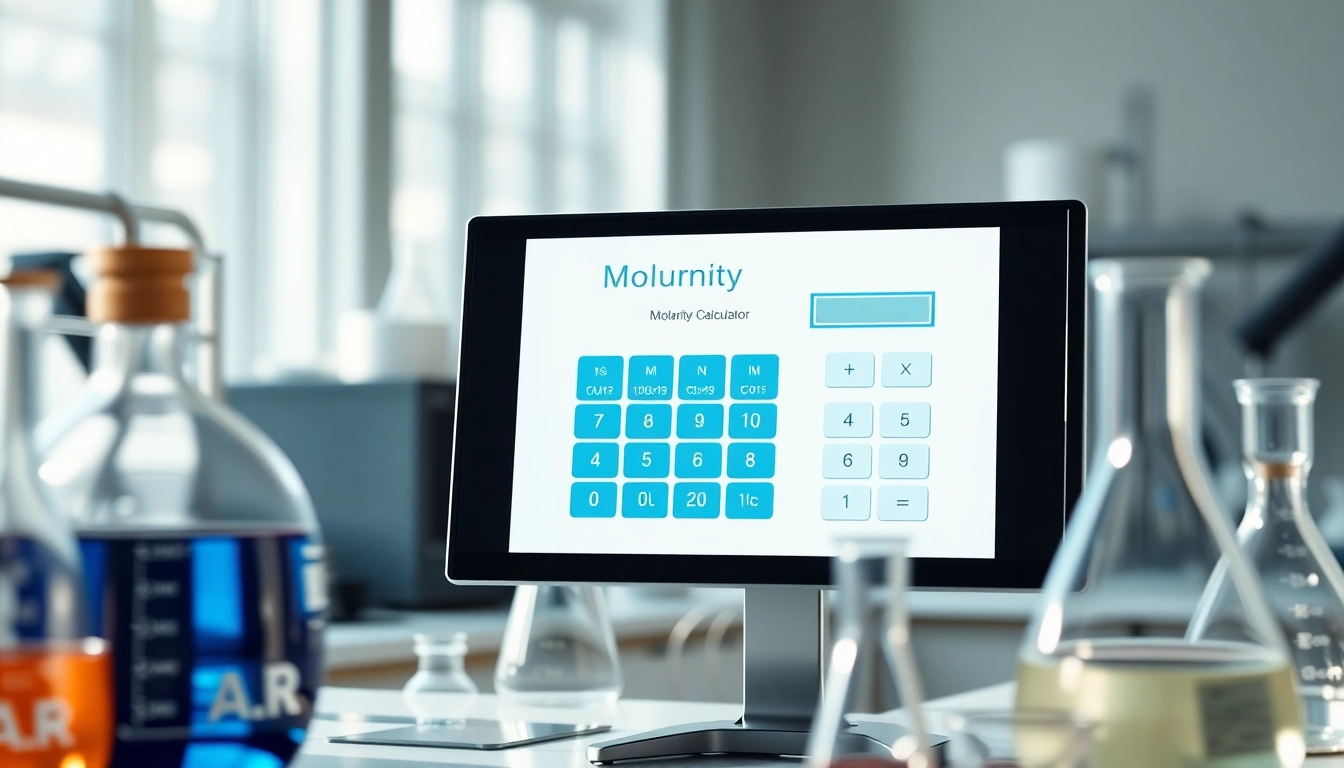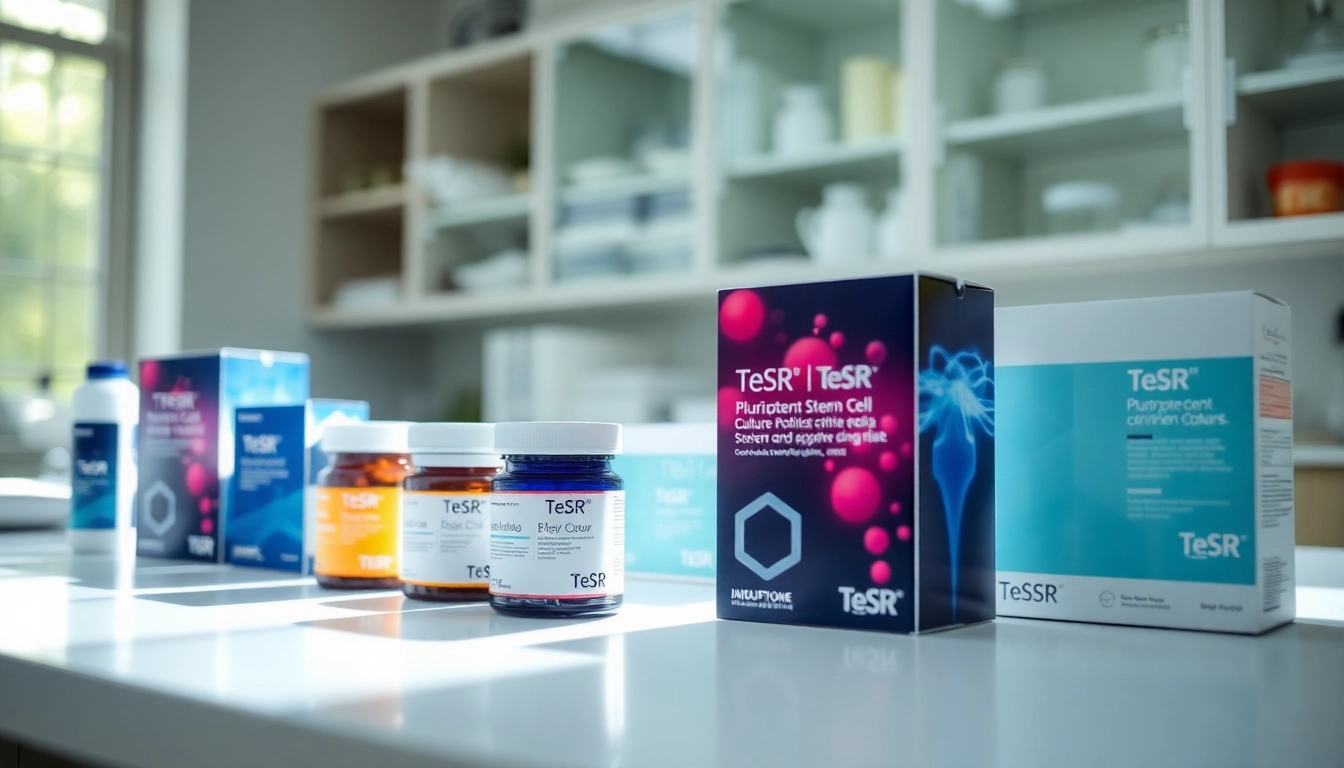Understanding the Basics of Molarity Calculator
Molarity is a key concept in chemistry that enables scientists and students to quantify the concentration of a solution. It represents the amount of solute (in moles) divided by the volume of the solution (in liters). The Molarity Calculator is an invaluable tool that simplifies the calculation process, allowing users to determine various concentrations and volumes based on known values. This introduction to molarity and its calculation is essential for anyone involved in chemistry, whether in a lab or in theoretical study.
What is Molarity and Why It Matters?
Molarity (M) is defined as the number of moles of solute present in one liter of solution. It is a crucial measurement in chemistry as it provides a means to express the concentration of substances in solutions, which is pivotal for stoichiometric calculations in chemical reactions. A higher molarity indicates a more concentrated solution, affecting both the rate and outcome of reactions. Understanding molarity is foundational in fields such as pharmacology, biochemistry, and environmental science.
Key Components of Molarity Calculation
The calculation of molarity hinges on three essential components:
- Number of Moles: The actual quantity of solute, often calculated using its mass and molecular weight.
- Volume of Solution: The total volume of the solution, expressed in liters.
- Molecular Weight: The weight of one mole of a substance, usually measured in grams/mole, which allows conversion between mass and moles.
How to Use the Molarity Calculator Effectively
Using the Molarity Calculator is a straightforward process. Users input known values for any three of the four variables: moles of solute, volume of solution, concentration, or molecular weight. The calculator will intelligently compute the fourth variable. It is advisable to double-check all input units and to ensure that they are consistent—moles should be converted to grams using molecular weight, and volumes should be measured in liters for accuracy.
Molarity Calculator: Formulas and Equations
Basic Formula for Molarity Calculation
The fundamental equation for calculating molarity is:
Molarity (M) = Moles of Solute / Volume of Solution (in L)
This equation requires that the number of moles be calculated from the mass of the solute using the formula:
Number of Moles = Mass (g) / Molecular Weight (g/mol)
Rearranging the Molarity Formula for Different Needs
Different scenarios may require rearranging the basic molarity equation:
- To find moles: Moles of Solute = Molarity (M) × Volume of Solution (L)
- To find volume of solution: Volume of Solution (L) = Moles of Solute / Molarity (M)
- To find mass of solute: Mass (g) = Moles of Solute × Molecular Weight (g/mol)
Practical Examples of Using Molarity Calculator
Consider a scenario where a chemist needs to prepare a 1M NaCl solution. If the molecular weight of NaCl is approximately 58.44 g/mol:
1. Calculate the amount of solute needed for 1 liter:
Mass (g) = 1M (moles/L) × 1 L × 58.44 g/mol = 58.44 g of NaCl
In practice, inputting the values into the Molarity Calculator would yield the same result quickly, ensuring accuracy and saving time.
Common Challenges in Molarity Calculation
Dealing with Different Units in Molarity Calculator
One common challenge revolves around the use of different units for mass and volume. Often, users may encounter mass in milligrams or volume in milliliters, which can confuse the calculation of molarity. It is crucial to stay consistent and convert all values to grams and liters before using the Molarity Calculator.
Understanding Concentrations and Their Impact on Results
Concentration not only affected by the amount of solute but also by temperature and pressure for certain reactions. This understanding is vital as it links directly to how reactions proceed. For example, increasing the temperature of a solution can increase solubility, thus affecting molarity.
How to Avoid Common Mistakes with Molarity Calculator
Common errors include miscalculating the mass of solute, using incorrect molecular weights, or not converting units properly. To avoid these pitfalls, users should rigorously check all values and use reliable sources for molecular weights. It’s also helpful to cross-check calculations manually or with another calculator to validate results.
Advanced Applications of Molarity Calculator
Calculating Molarity for Stock Solutions
In laboratory settings, it’s common to prepare stock solutions that are further diluted. The relationship between concentration and dilution can be expressed as:
C1V1 = C2V2
Where C1 and V1 denote the concentration and volume of the stock solution, and C2 and V2 refer to the concentration and volume of the diluted solution. The Molarity Calculator can easily handle these calculations, making it an essential tool for preparing accurate laboratory solutions.
Using Molarity Calculator in Dilution Scenarios
When diluting a solution, you need to know the desired concentration and final volume. By rearranging the dilution equation, you can determine how much of the stock solution is needed. For example, if you want to dilute a 1M solution to 0.1M and need 500 mL, you can calculate the required volume of the stock solution:
V1 = (C2 × V2) / C1 = (0.1M × 0.5L) / 1M = 0.05L = 50 mL
This way, the Molarity Calculator assists in ensuring precise dilutions.
Exploring the Link Between Molarity and Other Concentration Units
In addition to molarity, there are several other measures of concentration, such as molality and percent solutions. Understanding the conversions between these units can enrich the user’s chemistry knowledge. For instance, to convert molarity to molality, you need to consider the density of the solution:
Molality (m) = Molarity (M) × (Density of Solution (g/mL) / (1 – (Molarity × Molecular Weight / Density)))
Such conversions often arise in advanced chemistry problems, providing critical insight into solution behaviors.
Maximizing Efficiency with Molarity Calculator
Utilizing Molarity Calculator in Chemical Reactions
The Molarity Calculator also plays a vital role in designing experiments and predicting outcomes in chemical reactions. By knowing the molarity of reactants, chemists can calculate the expected products based on stoichiometry. The ratio of reactants to products is influenced by their respective molar concentrations. This correlation is essential for optimizing yields and minimizing waste.
Integrating Molarity Calculator in Labs and Classrooms
Educational institutions can benefit immensely from integrating the Molarity Calculator in laboratory practices. Interactive simulations can provide students hands-on experience with molarity calculations, reinforcing theoretical knowledge with practical application. Moreover, using a calculator in classroom settings encourages experimentation with different variables to observe their effects on solution concentrations.
Performance Metrics for Accuracy and Repeatability
To maximize the efficiency of the Molarity Calculator, users should also be aware of accuracy and repeatability in their experimental results. This can be achieved by maintaining consistent measurement protocols, utilizing calibrated equipment, and regularly validating the results from the Molarity Calculator through multiple trials. Continuous improvement processes and feedback loops can greatly enhance the precision of molarity calculations.



